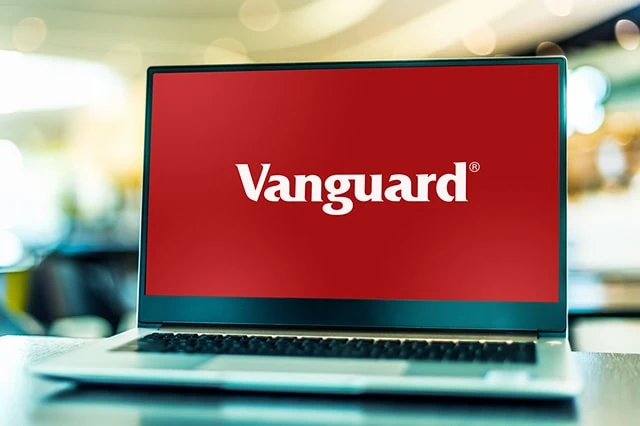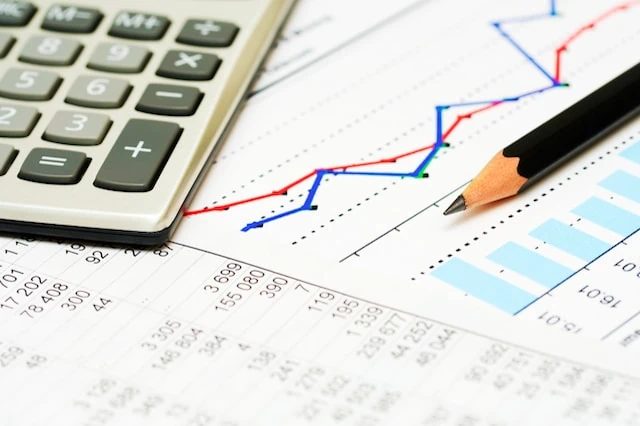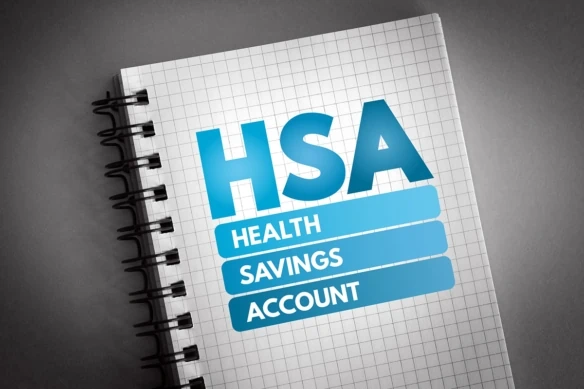Vanguard has changed retirement saving as we know it in many ways. But one of the lasting legacies that strikes truest with the average American is just how inexpensive they’ve made it to invest.
Vanguard is the creator of the index fund—a product that triggered a 30-year decline in investing expenses across the board. Fast-forward to today, and Vanguard is still a low-cost leader, making it a favorite hidey-hole of people looking to invest their health savings account (HSA) money.
Today, I’m going to introduce you to five Vanguard retirement-focused mutual funds you can invest in through your HSA plan. They all sport long-term investing objectives and reasonable-to-downright-low costs. You can also consider holding them in other tax-advantaged accounts, such as an IRA or (when available) a 401(k).
Disclaimer: This article does not constitute individualized investment advice. These securities appear for your consideration and not as personalized investment recommendations. Act at your own discretion.
Table of Contents
Can You Invest Through Your HSA?

Health savings accounts (HSAs) can best be described as part cash account, part investment account. While the money is primarily intended to be spent on qualified medical expenses, you can invest some or all of it—and many people (myself included) do.
While many HSA providers offer several investment options, you’ll often need to meet a minimum balance in your HSA before you can start investing. For instance, some HSA administrators might require you to have at least $2,500 in your cash account before you can invest; but some accounts don’t have this requirement.
How to Invest in Your HSA

As far as how to invest is concerned, that’s largely dependent on the investments your HSA provider offers, which can vary widely. (We’ll cover our top Vanguard retirement picks for your HSA account momentarily.)
Some HSAs are self-directed and let you choose from thousands of stocks, bonds, exchange-traded funds (ETFs), and mutual funds. In that case, how you invest is just about the same as how you’d invest in a traditional brokerage account or individual retirement account (IRA).
However, other HSAs might require you to choose from a very limited set of mutual funds or ETFs. Even then, the process is pretty simple—just select which fund or funds you want to purchase with your available funds.
If you have a high-deductible health care plan (HDHP) and are eligible for an HSA, research different HSA providers and their investment choices to determine which investments are available to you.
Related: The 10 Best Vanguard Index Funds You Can Buy
What Should You Want in a Retirement Fund?
When investing your retirement savings, you need to consider a few critical factors.
To start, a robust retirement portfolio should provide diversification across various asset classes. This typically means stocks and bonds, though it can also mean alternative asset classes such as real estate or commodities. Diversifying your retirement portfolio across these asset classes can help defray your risk and smooth your returns.
Costs matter too. Every dollar spent on fees and expenses is a dollar no longer available to grow and compound over time, so keeping expenses cut to the bone is vital. Good news there: The best Vanguard retirement funds will generally have some of the lowest fees and expenses in the business.
And don’t forget taxes. A taxable account, like a standard brokerage account, is better suited to take advantage of certain tax-advantaged investments, such as municipal bonds. For tax-advantaged accounts, such as HSAs, some of the best investments include bond funds and actively managed stock funds. (I’ll explain why when we get to those funds.)
Finally, you ideally want your retirement portfolio to produce regular dividend income. Stocks can regularly experience nasty corrections and bear markets, but a good income fund can provide for your living expenses without forcing you to sell at an inopportune time.
Why Vanguard?

Vanguard Group is a leader in investment funds. Today, this former upstart mutual fund company has $8.0 trillion in assets under management with an average expense ratio of just 0.08%, or a mere 80¢ for every $1,000 invested. There are currently more than 420 Vanguard funds, including mutual funds and Vanguard ETFs.
Vanguard grew into the powerhouse mutual fund company it is today by taking care of its clients and genuinely looking after their interests. Vanguard funds really started and continue to accelerate the trend of fee compression. But it’s not only the best Vanguard retirement funds that benefit. We all collectively pay less in fees and expenses and enjoy better returns because of the index revolution started and led by Vanguard’s founder Jack Bogle.
Related: Best Vanguard Retirement Funds for a 401(k) Plan
The Best Vanguard Retirement Funds for an HSA in 2024
With all that out of the way, let’s dig into some of the best Vanguard retirement funds to hold in an HSA to consider diving into this year.
I’m splitting this list into needs for two types of investors:
- People treating their HSA as a second IRA. They’re looking for some long-term growth, and they’re willing to accept some—not a lot, but some—risk.
- People who just want to earn a little money on their health savings. These people plan on using their HSA for health-related expenses, but would like to make at least a little money while those funds are just sitting around.
Also note that each fund comes with a “Vanguard risk rating.” Vanguard provides a risk rating on a scale of 1 to 5, with 1 being the least risky, and 5 being the riskiest. Most stock strategies are a 4 or 5; for the purposes of reducing risk, the only stock strategies on my list have a score of 4. Most balanced (stock and fund) strategies are a 3. And most bond strategies are a 1 or 2.
HSA-as-an-IRA Fund #1: Vanguard Dividend Growth Investor Shares

- Style: U.S. large blend
- Assets under management: $51.5 billion
- Expense ratio: 0.30%, or $3.00 per year for every $1,000 invested
- Dividend yield: 1.6%
- Minimum initial investment: $3,000
- Vanguard risk rating: 4 (out of 5)
A dividend-growth strategy isn’t about generating high yield now. Instead, it’s about generating high yield over time—and identifying exceptional companies to boot. A dividend stock with even a modest yield, with years of dividend growth, can eventually deliver a high “yield on cost” (the yield you’re actually earning based on the price you bought the stock). Also, dividend growers tend to be high-quality companies; only firms with strong financials and excellent cash flows can afford to keep paying shareholders more every year
These are exactly the kinds of stocks you get access to through Vanguard Dividend Growth Investor Shares (VDIGX).
Vanguard itself says VDIGX “focuses on high-quality companies that have both the ability and the commitment to grow their dividends over time.” Management has homed in on a tight portfolio of roughly 40 predominantly mega-cap stocks with bulletproof balance sheets. And while all the stocks here have raised their payouts for at least a few years, some have long histories of uninterrupted dividend growth. Procter & Gamble (PG) and Colgate-Palmolive (CL), for instance, are Dividend Kings, which are stocks that have raised their dividends annually for at least 50 consecutive years.
One risk of actively managed funds? A skilled manager might leave. That just happened at VDIGX—Donald Kilbride stepped down from his long-held role as manager as of Jan. 1, 2024, handing the reins to comanager Peter Fisher. But Kilbride will continue to provide ideas for the portfolio. And Morningstar, which gives VDIGX a Gold Medalist rating, says “given the new lead manager’s capabilities, knowledge of the approach, and ample analytical support, the strategy continues to have excellent prospects.”
You want to hold actively managed mutual funds like VDIGX in tax-advantaged plans like an HSA because of how they’re run—that is, human managers tend to add and subtract holdings much more often than an index fund does. And trading in mutual funds can generate capital gains, which are returned to investors as distributions every year. These distributions are taxable, but you can snuff out this liability by not holding these funds in a taxable account. (To VDIGX’s credit, turnover isn’t high at all, at 11%, which means in a given year, it trades 11 out of every 100 holdings.)
Want to learn more about VDIGX? Check out the Vanguard provider site.
Related: 7 High-Quality, High-Yield Dividend Stocks to Buy
HSA-as-an-IRA Fund #2: Vanguard Global Minimum Volatility Fund Investor Shares

- Style: U.S. large blend
- Assets under management: $217.9 million
- Expense ratio: 0.21%, or $2.10 per year for every $1,000 invested
- Dividend yield: 2.8%
- Minimum initial investment: $3,000
- Vanguard risk rating: 4 (out of 5)
Vanguard Global Minimum Volatility Fund Investor Shares (VMVFX) checks off a lot of boxes. It invests in U.S. stocks. It invests in international stocks. It provides a high level of yield. And it’s designed to reduce volatility.
If you want to diversify your portfolio to also hold non-U.S. stocks, you’ll need a quick terminology lesson. An “international” fund invests only in companies outside the U.S., while a “global” fund invests in both U.S. and international companies. Like many global funds, VMVFX dedicates the largest chunk of its assets to the U.S., which sits at 55% of the portfolio right now. The rest of VMVFX’s holdings are spread across 23 other countries, including Japan (11%), India (4%), and Australia (4%).
Vanguard Global Minimum Volatility’s nearly 250-stock portfolio is chock full of above-average yielders like America’s Merck (MRK) and Lockheed Martin (LMT), Switzerland’s Swisscom (SCMWY) and Brazil’s Itau Unibanco (ITUB). That powers a current near-3% fund yield that’s twice that of the S&P 500.
Managers John Ameriks and Scott Rodemer have built this portfolio to deliver less volatility than your average global equity fund. They use a rules-based strategy that’s similar to what an index would provide, but they’re not forced to rebalance the portfolio on a set schedule, and they also use contracts to hedge against currency risk.
Low- and minimum-volatility strategies are generally a trade-off: You sacrifice some upside potential in bull markets to get portfolio protection when markets decline. And in VMVFX’s case, the downside protection is quite good. According to Morningstar Analyst Ryan Jackson, “From its December 2013 inception through April 2023, it captured just 67% of the category index’s downside, with shallower drawdowns and 17% less volatility.”
Also note that VMVFX has a fair bit of turnover, at about 45%, so it’s turning over roughly half of its portfolio every year. As a result, the fund can and does make capital gains distributions, making this a fine fit for a tax-advantaged account like an HSA.
Want to learn more about VMVFX? Check out the Vanguard provider site.
Related: 10 Best Vanguard Index Funds to Buy
HSA-as-an-IRA Fund #3: Vanguard 500 Index Fund Admiral Shares

- Style: U.S. large-cap stock
- Assets under management: $484.2 billion
- Expense ratio: 0.04%, or 40¢ per year for every $1,000 invested
- Dividend yield: 1.3%
- Minimum initial investment: $3,000
- Vanguard risk rating: 4 (out of 5)
If we’re talking about tax consequences alone, a taxable account is much better positioned to take advantage of an index fund’s tax efficiency than a tax-advantaged account.
However, if you’re simply using an HSA like a second IRA, and performance is your ultimate goal, an S&P 500 index fund still belongs in your portfolio.
The vast majority of fund managers who run large-cap funds (funds that invest in larger companies) struggle to consistently beat the S&P 500 Index, particularly after fees. In the first half of 2023, 60% of active managers underperformed the S&P 500, according S&P Dow Jones Indices. That’s no anomaly: A majority of active managers have failed to beat the S&P 500 in 20 out of the past 23 years.
So if you can’t beat it, join it.
The Vanguard 500 Index Fund Admiral Shares (VFIAX) boasts almost $485 billion in assets under management, and that’s just in the VFIAX share class. Across VFIAX and its ETF share class, this fund manages more than $1.1 trillion! That scale is why VFIAX can offer a skinflint expense ratio of just 0.04%—that’s not free, but it’s awfully close.
The S&P 500 is a collection of the largest and most dominant American companies. To be selected for this stock market index, a company must have a market capitalization of at least $18.0 billion, its shares must be highly liquid (shares are frequently bought and sold), at least 50% of its outstanding shares must be available for public trading, it must have positive earnings in the most recent quarter, and the sum of its previous four quarters must be positive. Once a company is in the index, it doesn’t necessarily get kicked out if it fails to meet all of the criteria at some point in the future, but the selection committee would take that under consideration.
Turnover (how much the fund tends to buy and sell holdings) tends to be extremely low, as only a handful of stocks enter or leave the index in any given year. So VFIAX typically makes little to no capital gains distributions. This makes the fund an extremely tax-efficient option for taxable accounts.
But again, if you’re simply treating your HSA like a second IRA, and your goal is to simply maximize performance, there’s no good reason not to hold VFIAX in tax-advantaged accounts like an HSA, too. This might be Vanguard’s oldest index strategy, but it remains one of the very best Vanguard retirement funds.
Want to learn more about VFIAX? Check out the Vanguard provider site.
Related: 10 Best Fidelity Funds to Buy
HSA-as-an-IRA Fund #4: Vanguard Target Retirement Funds

- Style: Target-date
- Expense ratio: 0.08%, or 80¢ per year for every $1,000 invested
- Minimum initial investment: $1,000
- Vanguard risk rating: 3 to 4 (out of 5)
One of the challenges in retirement planning is getting the asset allocation right, or having an asset class mix that is appropriate for an investor at your age and stage of life. An ideal portfolio for a 20-year-old is likely going to be very different from that of a 40-year-old, and both those portfolios will be different from what’s ideal for a 60-year-old.
This is where Vanguard target retirement funds can really add value.
Target-date funds—also called life-cycle funds—are a type of mutual fund that are designed to change their asset allocation over time. Target-date funds start out invested heavily in stocks, then slowly reduce their stock exposure and replace it with bond exposure as they approach their target retirement date, following a glide path.
The target retirement dates are intended to be estimates; they don’t have to be super precise. Generally, most mutual fund families will create target-date funds in five-year increments (say, 2025, 2030, 2035, etc.).
Vanguard is one of the largest players in this space, and the Vanguard Target Retirement Funds tend to be very competitive on price. The funds themselves typically hold both U.S. and international stocks of various sizes, as well as U.S. and international bonds. Also attractive is a $1,000 minimum required investment, which is much smaller than Vanguard’s typical $3,000 buy-in.
Just note that there are big differences in the risk profiles of each fund because each fund’s blend of stocks and bonds is different. For instance, Vanguard Target Retirement 2070 Fund (VSVNX) is 90% stocks and 10% bonds—a much more aggressive mix than Vanguard Target Retirement 2020 (VTWNX), which is 40% stocks and 60% bonds.
Given the hyper-specific focus on retirement, target-date funds are a mainstay of 401(k) plans. But if you’re treating your HSA like an IRA, and you’re just investing with retirement in mind, Vanguard Target Retirement Funds belong in an HSA too. An HSA’s tax advantages will also become more pronounced over time as the fund buys more bonds and more of the fund’s performance comes from interest income, which is taxed at ordinary rates.
Want to learn more about Vanguard Target Retirement Funds? Check out the Vanguard provider site.
Related: 9 Best Fidelity Index Funds to Buy
Earn Money on Health Savings Fund #1: Vanguard Wellington Fund Investor Shares

- Style: Moderate allocation
- Assets under management: $13.2 billion
- Expense ratio: 0.25%, or $2.50 per year for every $1,000 invested
- Dividend yield: 2.1%
- Minimum initial investment: $3,000
- Vanguard risk rating: 3 (out of 5)
Vanguard Wellington Fund Investor Shares (VWELX) is Vanguard’s oldest mutual fund—a “balanced” or “allocation” product (read: stocks and bonds) that has been around since 1929. It’s managed by Wellington Management, an investment management company with nearly a century of operational experience.
Wellington, which is considered a moderate allocation fund, invests about two-thirds of assets in stocks, and the other third in bonds. The stock portion of the portfolio currently holds 77 predominantly large-cap stocks with a median market cap of over $200 billion. It’s a “who’s who” of blue chips such as Microsoft (MSFT), Apple (AAPL), UnitedHealth (UNH), and Procter & Gamble (PG). The bond portfolio is much more broadly diversified, at more than 1,300 investment-grade issues. The majority of that (roughly two-thirds) is invested in corporate bonds, with another 21% in Treasuries, and the rest peppered across mortgage-backed securities, foreign sovereign bonds, and other debt.
Put more succinctly: Wellington is a one-stop shop for your core large-cap stock and bond needs, and its 0.25% in annual expenses is very inexpensive for the skilled management and strong performance track record you’re getting in return. Just make sure you’re considering your own investment needs with this fund—if you don’t want a third of your portfolio to be in bonds, you’ll want to put additional money into individual stocks, equity funds, and/or alternative investments.
Wellington has a fair bit of turnover (40%) and generates a decent chunk of interest income from its bond portfolio. So, if you’re going to invest in VWELX, it makes sense to do so in a tax-advantaged account like an HSA.
Want to learn more about VWELX? Check out the Vanguard provider site.
Related: 9 Monthly Dividend Stocks for Frequent, Regular Income
Earn Money on Health Savings Fund #2: Vanguard Total Bond Market Index Fund Admiral Shares

- Style: U.S. intermediate core bond
- Assets under management: $96.2 billion
- Expense ratio: 0.05%, or 50¢ per year for every $1,000 invested
- SEC yield: 4.7%*
- Minimum initial investment: $3,000
- Vanguard risk rating: 2 (out of 5)
No retirement asset allocation is complete without bond funds. As an asset class, bond funds play an important role in lowering volatility and providing regular income. However, because bond interest is taxable at less favorable (read: ordinary) rates—and because interest is the predominant source of returns on bonds—bond funds are best held in tax-advantaged accounts like HSAs.
Within the world of Vanguard bond funds, the Vanguard Total Bond Market Index Fund Admiral Shares (VBTLX) stands out as one of the very best Vanguard retirement funds for its combination of competitive yield and rock-bottom fees and expenses. VBTLX is large, with $96.2 billion in the Admiral share class and more than $315 billion in quality bond assets spread across all of its share classes. And with an expense ratio of just 0.5%, it’s all but free to own.
The Vanguard Total Bond Market Index Fund provides broad exposure to the universe of bonds. Approximately 46% of its portfolio is Treasury or agency debt backed by the U.S. government, and another 20% is invested in government mortgage-backed securities (MBSes). Industrial-sector corporate bonds make up a little over 15%, banks and financial institutions make up 9%, and the rest is spread across foreign bonds, utilities, and commercial mortgage backed securities (CMBSes).
One of the most critical metrics to consider when considering bond funds is duration, which is a measure of interest-rate sensitivity. As an example, a bond with a duration of two years would see its price rise by 2% if interest rates fell by 1% (or conversely, would see its price fall by 2% if interest rates rose by 1%). The actual calculation of duration is fairly complex; it’s the weighted average of the bond’s cash flows. But the key takeaway is that, all else equal, the longer a bond’s time to maturity, the higher its duration—and thus the higher the interest-rate risk.
The Vanguard Total Bond Market Index Fund, with a duration of 6.3 years, has a medium-term duration with only moderate interest-rate risk. So, apart from the 4%-plus yield, investors could enjoy respectable capital gains if market interest rates decline in the coming years in response to falling inflation.
* SEC yield reflects the interest earned across the most recent 30-day period. This is a standard measure for funds holding bonds and preferred stocks.
Want to learn more about VBTLX? Check out the Vanguard provider site.
Related: 7 Best T. Rowe Price Funds to Buy
Earn Money on Health Savings Fund #3: Vanguard Federal Money Market Fund

- Style: Money market
- Assets under management: $301.4 billion
- Expense ratio: 0.11%, or $1.10 per year for every $1,000 invested
- SEC yield: 5.3%
- Minimum initial investment: $3,000
- Vanguard risk rating: 1 (out of 5)
When interest rates go higher, higher-duration bond funds can experience capital losses. That was certainly the case in 2022, when very long-term bonds actually saw greater losses than common stock indexes like the S&P 500.
If you are looking for a competitive yield with essentially no duration or interest rate risk at all, the Vanguard Federal Money Market Fund (VMFXX) is a solid option and one of the very best Vanguard retirement funds at today’s prices. This income fund consists entirely of U.S. Treasury bills and other U.S. government obligations and repurchase agreements. And because money market funds are effectively bond funds, with interest income the predominant source of returns, they too belong in tax-advantaged plans like an HSA.
Money market funds are an extremely conservative option with extremely limited possibility of loss. However, they are very sensitive to Federal Reserve policy moves. It was barely two years ago that money market funds in general offered virtually nothing in yield. But after the most aggressive string of rate hikes in history, VMFXX is a legitimate income fund with a yield above 5%.
If, as is widely expected, the Fed starts lowering rates in 2024, VMFXX will see its own yield fall as its existing portfolio matures and is replaced with newer lower-yielding investments. If and when that day comes, you might want to re-evaluate your options. But until then, the Vanguard Federal Money Market Fund remains one of the very best Vanguard retirement funds for its low risk and competitive yield.
Want to learn more about VMFXX? Check out the Vanguard provider site.
Related: 7 Best Schwab Funds to Buy
How Does Your Portfolio Look? Ask Empower

More than 3 million users are putting their retirement on track by putting Empower’s tools and/or advisory services to work for them.
Wondering how your portfolio is shaping up? Sign up with Empower to use its free Investment Checkup tool, which can help you assess your portfolio risk, analyze past performance, and get a target allocation for your portfolio. You can even compare your portfolio to both the S&P 500 and Empower’s “Smart Weighting” Recommendation.
And if you want a fuller advisory experience? Empower’s full-service Wealth Management account pairs the firm’s tools with skilled human management. Empower will create a recommended portfolio spanning six asset classes, then help you implement your plans by giving you access to financial advisors who can guide you through retirement planning, college savings, workplace stock options, and more.
Regardless of how much money you bring to the table, if you sign up, you will be given the option to schedule an initial 30-minute financial consultation with an Empower advisor.
- Empower (formerly Personal Capital) offers both a free set of portfolio, net worth, and cash flow tracking tools, as well as paid asset management service.
- Link Empower to your bank and investing accounts, credit cards, and more to see a single view of useful information and data, including your net worth.
- Empower Wealth Management offers unlimited advice and retirement planning help, as well as managed ETF portfolios, for accounts with between $100,000 and $250,000 in assets. Higher asset tiers include access to dedicated financial advisors, retirement specialists, and more investment options (including stocks, options, real estate, and private equity).
- Free portfolio tracker
- Free net worth, cash flow, and investment reporting tools
- Dedicated investment advisor
- Free tax-loss harvesting
- Dividend reinvestment
- Automatic rebalancing
- 5-day-a-week live customer support, 24/7 email support
- High minimum for investment management ($100k)
- High investment management fee (0.89% AUM)
Related: Best Vanguard Retirement Funds to Hold in an IRA
Is Investing Health Savings Account Funds a Good Idea?
Yes, it can be a good idea to invest the funds in your health savings account—after all, investing is generally the best way to grow wealth over time. But you should also keep at least a portion of your HSA balance saved as cash so you can still easily spend it if you need it.
For instance, I typically keep my estimated annual out-of-pocket expenses in the savings portion of my HSA and invest the remaining balance for long-term needs, such as medical expenses in retirement. This gives me added peace of mind that the money is available if we can’t afford to cover unexpected health care costs with our normal checking account.
Related: 7 Best Schwab Index Funds to Buy
Why You Should Invest Your HSA Funds

Some people just aren’t in a financial position where they can invest their HSA funds. But if you are, there are oh-so-many reasons to put at least some of that HSA money to work.
1. Triple Tax Advantage
HSAs offer an impressive trifecta of potential tax benefits, including:
- Pre-tax contributions: Contributions to an HSA made via payroll deduction are pre-tax. Any contributions you make on your own (not via payroll deduction) may be 100% tax-deductible.
- Tax-free investment growth: Your HSA investment earnings and interest earned on the savings portion aren’t subject to taxes either.
- Tax-free withdrawals for qualified medical expenses: If you withdraw HSA dollars for a qualified medical expense, you won’t be taxed on the withdrawal.
You will pay income taxes and a 20% penalty on withdrawals for non-qualified costs before age 65. However, after age 65, while you’ll still have to pay ordinary income tax on non-qualified withdrawals, you’ll no longer have to pay any penalties.
Related: Best Vanguard Retirement Funds to Hold in a 401(k)
2. Long-Term Growth
Chances are your health care expenses will probably rise as you age. If you have a high-deductible health plan and start investing in an HSA early, you can build a sizable nest egg for medical costs (or other expenses) in retirement. This will provide some assurance that your future health care costs will be covered even if they grow more expensive when you’re older.
Related: 6 Common HSA Mistakes to Avoid
3. Investment Options
Similar to what you’d see with a taxable brokerage account, HSAs sometimes offer numerous investment options, including individual stocks, bonds, certificates of deposit (CDs), funds, and more.
For instance, with a self-directed HSA, investors can allocate a portion of their investments to equities, fixed-income assets, exchange-traded funds (ETFs), and mutual funds. Unlike many other HSA administrators, Fidelity also supports fractional share investing, which makes higher-priced shares more accessible for investors working with smaller dollar amounts.
Do I Qualify for a Health Savings Account (HSA)?

To be eligible for a health savings account, you’ll need to be enrolled in a qualifying high-deductible health plan (HDHP). If you enroll in a high-deductible health plan through your employer, you can open an HSA account through your employer if they also offer that, but if not, you can sign up for your own personal HSA account.
For 2024, deductibles with an HDHP are at least $1,600 for self-only coverage or $3,200 for family coverage ($1,650 or $3,300, respectively, for 2025), which can be a hefty sum to pay out of pocket. But pre-tax money saved in your HSA can be used to offset those costs and other qualified medical expenses.
Vanguard Funds for Retirement: Frequently Asked Questions (FAQs)

What is the minimum investment amount on Vanguard mutual funds?
Vanguard funds are known for being shareholder-friendly. The Vanguard mutual fund company blazed new trails with the index fund, and Vanguard has done more than any other investment firm to keep costs to a minimum for investors.
But there is one hitch. Many of Vanguard’s cheapest funds in terms of fees have initial investment minimums of around $3,000.
If that is a problem for you, don’t sweat it. Most popular Vanguard index funds are also available as ETFs. Most self-directed HSAs will allow you to buy as little as one share, and some even allow for fractional shares. And if you use a commission-free brokerage, you can buy those ETFs without incurring additional fees. ETF prices vary, of course, but many cost less than $100, and they rarely exceed $400 per share.
Why does a fund’s expense ratio matter so much?
Every dollar you pay in expenses is a dollar that comes directly out of your returns. So, it is absolutely in your best interests to keep your expense ratios to an absolute minimum.
The expense ratio is the percentage of your investment lost each year to management fees, trading expenses and other fund expenses. Because index funds are passively managed and don’t have large staffs of portfolio managers and analysts to pay, they tend to have some of the lowest expense ratios of all mutual funds.
This matters because every dollar not lost to expenses is a dollar that is available to grow and compound. And over an investing lifetime, even a half a percent can have a huge impact. If you invest just $1,000 in a fund generating 5% per year after fees, over a 30-year horizon, it will grow to $4,116. However, if you invested $1,000 in the same fund, but it had an additional 50 basis points in fees (so it only generated 4.5% per year in returns), it would grow to only $3,584 over the same period.









